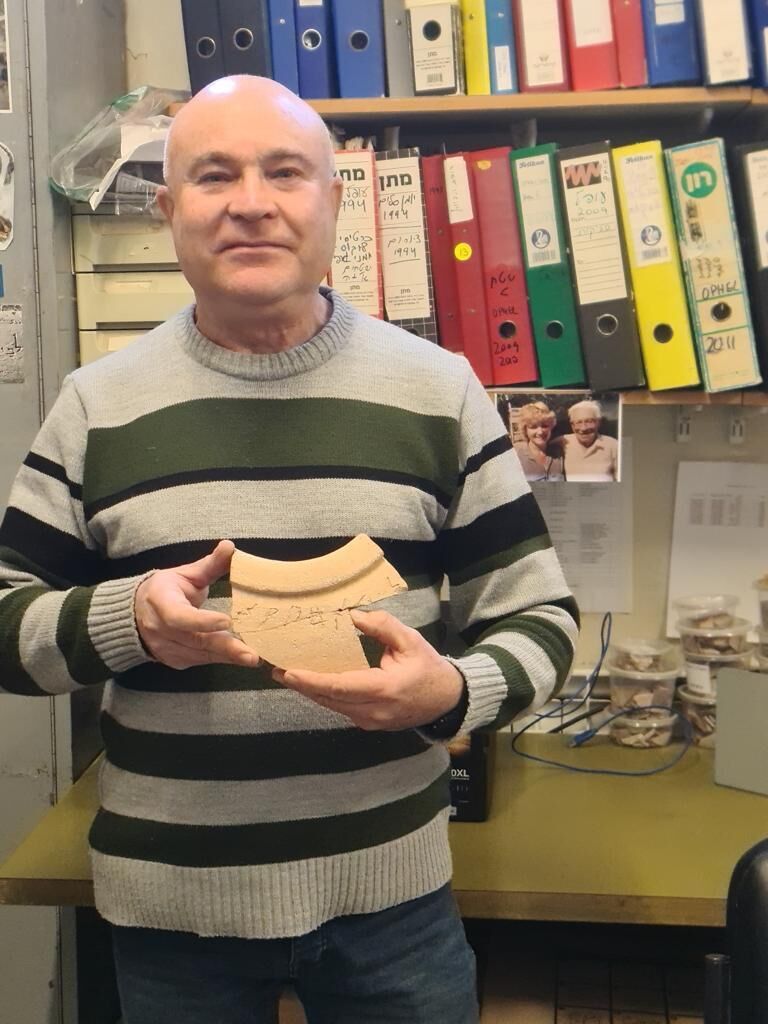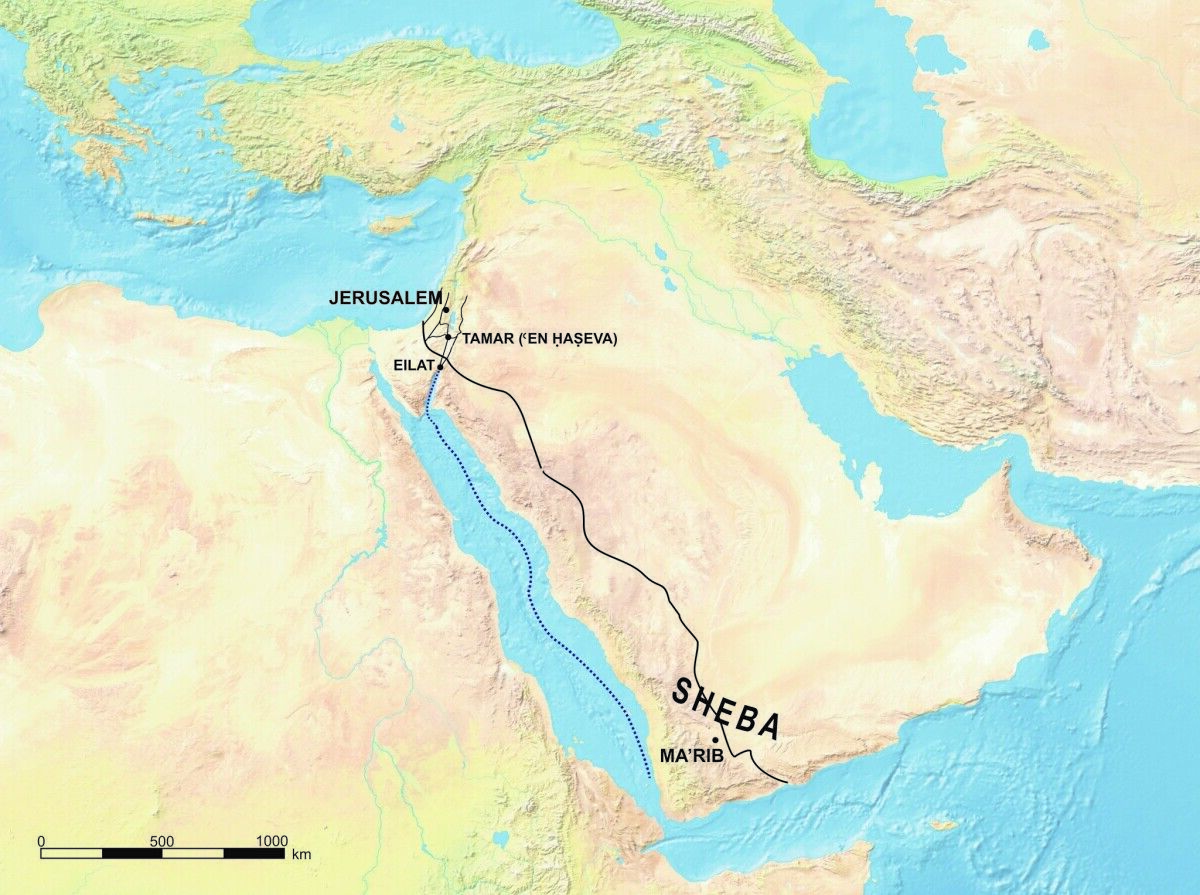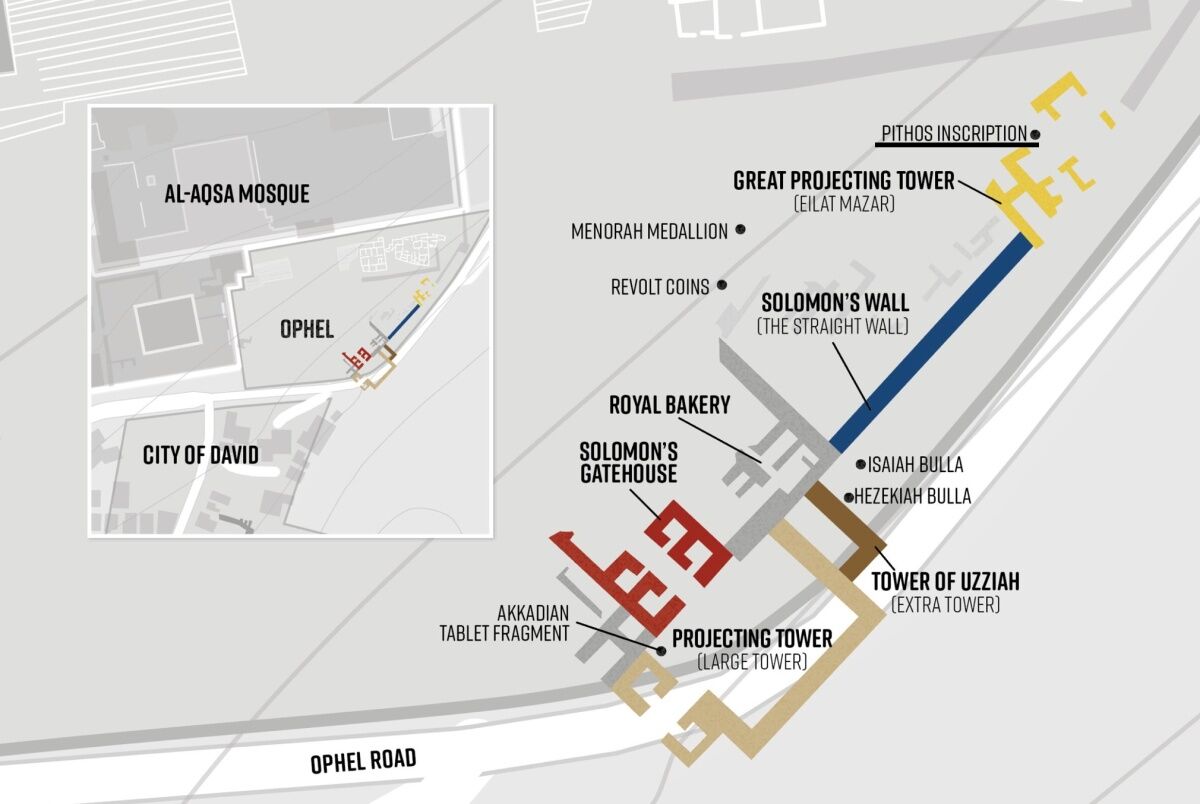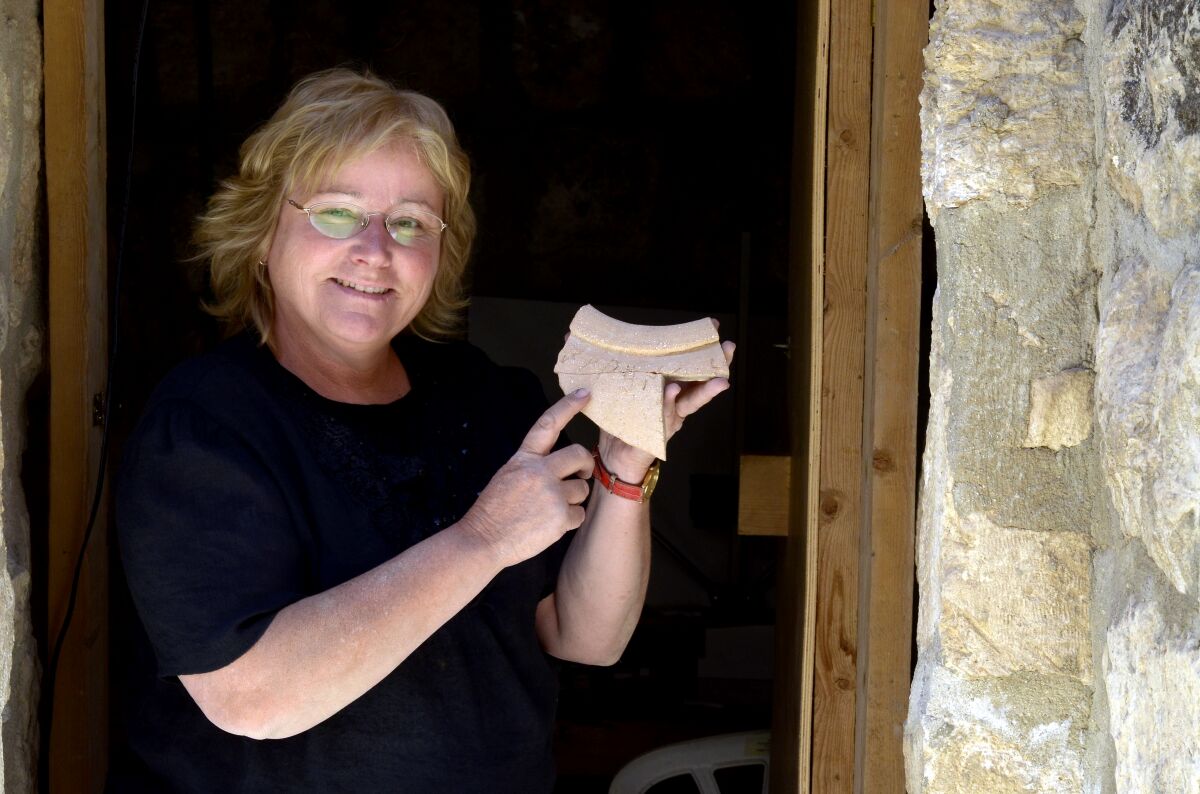Archaeological evidence of the famous biblical Queen of Sheba and her visit to Jerusalem during the reign of Solomon (1 Kings 10) has remained elusive.
That is, up until now—thanks to a new reanalysis of the enigmatic Ophel pithos inscription, conducted by expert epigrapher Dr. Daniel Vainstub.
In the course of excavations of the Ophel near the southeast corner of the Temple Mount in late 2012, led by the late Dr. Eilat Mazar and funded by Daniel Mintz and Meredith Berkman, our team of volunteers from Herbert W. Armstrong College discovered a number of large, broken pithoi (storage vessel) pieces embedded in a void in the bedrock. We were stunned to discover that one of the sherds—part of the rim of one of the vessels—contained a comparatively large inscription. Given the dating to the 10th century b.c.e. (the time period of Israel’s united monarchy led by kings David and Solomon)—a dating corroborated last year in a meticulous stratigraphic and ceramic analysis published by Dr. Ariel Winderbaum—the discovery was hailed as the earliest alphabetical inscription ever found in Jerusalem and among the earliest found in Israel.

Exactly what the inscription read, though—and even the exact language it was written in—remained elusive. Certainly it represented a Semitic language. The prevailing view was that it was a Proto-Canaanite inscription, with some arguing for its identification more specifically as a Hebrew inscription. Even still, given the fragmentary nature of the inscription, there was no consensus as to what it said (with theories floated that it may contain the word for “wine”).

In a new article published today in Hebrew University’s Jerusalem Journal of Archaeology, epigrapher Dr. Daniel Vainstub presented an entirely different conclusion: that the inscription is actually Ancient South Arabian (asa). Furthermore, that the inscription refers particularly to a trade of incense from the southern Arabian Peninsula known as ladanum (Cistus ladaniferus).
Most intriguingly, this conclusion brings together a remarkable convergence of biblical information. The territory of Sheba is widely identified by scholars with this southwestern end of the Arabian Peninsula, in the area of modern-day Yemen. The 10th-century dating fits with the biblical chronology of the time period for the Queen of Sheba’s visit to King Solomon’s Jerusalem and its temple (not far, we might add, from the findspot location). The biblical account describes her bringing a “very great train, with camels that bore spices.” Furthermore, Exodus 30:34 actually speaks to the use of this particular substance as incense in the tabernacle and temple rituals.

A press release issued today from the Hebrew University stated: “According to the new interpretation, the inscription on the jar reads, ‘[ ]shy l’dn 5,’ meaning five ‘šǝḥēlet,’ referring to one of the four ingredients mentioned in the Bible (Exodus 30:34) required for the incense mixture. The ‘šǝḥēlet’ was an essential ingredient in the incense that was burnt in the First and Second Temples …. This indicates a clear connection between Jerusalem of the 10th century b.c.e. (the days of the kingdom of Solomon) and the Kingdom of Sheba.”
“Apart from the š, which has a minor anomaly, all the surviving letters of the inscription display the stance and characteristic features of Phase A of asa script,” Dr. Vainstub writes. (Intriguingly, one enigmatic letter on the inscription that posed a real difficulty in original interpretation—“its remains do not fit the shape of any Canaanite letter”—is nicely paralleled in the Ancient South Arabian script.) He believes that this pithos inscription represents evidence of this kind of biblically attested 10th-century trade between southern Arabia and Jerusalem (a distance of over 2,000 kilometers). The biblical account speaks to this, following the description of the queen’s visit: “[T]here came no more such abundance of spices as these which the queen of Sheba gave to king Solomon” (1 Kings 10:10).
Even the interpretation of the letter representing a quantity of “five,” in South Arabian form, would be a good fit. Pithoi of this type had a capacity of roughly 110-120 liters. The Judahite ephah, a common measure in the Bible, equates to about 20-24 liters. Therefore, the storage vessel would have logically been able to contain precisely this numeric quantity of product—five ephahs.

As summarized in the press release, during the 10th century b.c.e., the kingdom of Sheba “thrived as a result of the cultivation and marketing of perfume and incense plants, with Ma’rib as its capital. They developed advanced irrigation methods for the fields growing the plants used to make perfumes and incense. Their language was a South Semitic one. King Solomon is described in the Bible as controlling the trade routes in the Negev, which Sabaean camel caravans carrying perfumes and incense plants passed through on their way to Mediterranean ports for export.”

“It appears that the pottery jar was produced around Jerusalem and the inscription on it was engraved before it was sent for firing by a speaker of Sabaean who was involved in supplying the incense spices,” the press release continues. Dr. Vainstub believes that the inscription was engraved by a native speaker of the southern Arabian language stationed in Jerusalem and involved in supplying the incense spices. He summarized: “Deciphering the inscription on this jar teaches us not only about the presence of a speaker of Sabaean in Israel during the time of King Solomon, but also about the geopolitical relations system in our region at that time—especially in light of the place where the jar was discovered, an area known for also being the administrative center during the days of King Solomon. This is another testament to the extensive trade and cultural ties that existed between Israel under King Solomon and the Kingdom of Sheba.”
He further noted the until-recently limited amount of research into the Ancient South Arabian script—a field that has “expanded enormously in recent decades,” thus allowing for the identification of this inscription as an example of such.
Dr. Vainstub concluded his research article: “The discovery of the Ophel inscription marks a turning point in many fields. Not only is this the first time an asa inscription dated to the 10th century b.c.e. has been found in such a northern location, but it is also a locally engraved inscription, attesting to the presence of a Sabaean functionary entrusted with incense aromatics in Jerusalem.” He continued:
The Ophel inscription makes an important contribution to the age-old question of the likelihood of a visit by a delegation from the South Arabian Peninsula to King Solomon in the 10th century b.c.e. as related in 1 Kings 10 and 2 Chronicles 9 ….
Our inscription marks the starting point of what was to be a lengthy supply line of aromatics from Sheba to the Temple of Jerusalem, as expressed by two prophets [Isaiah and Jeremiah]. Thus, in Isaiah (60:6; Alter) it is said that “a tide of camels shall cover you, dromedaries from Midian and Ephah, they shall come from Sheba. Gold and frankincense they shall bear and the Lord’s praise they shall proclaim.”


